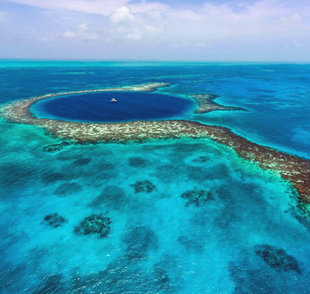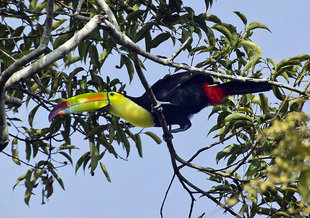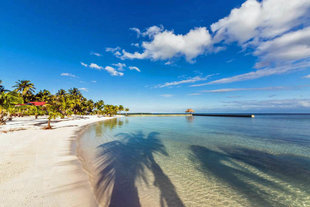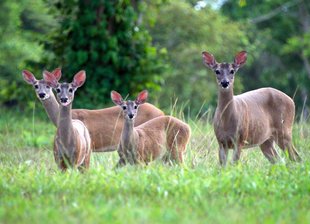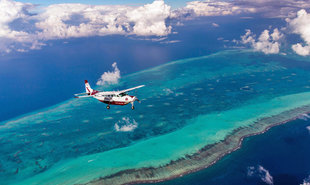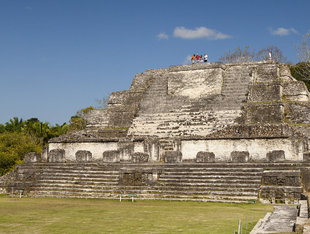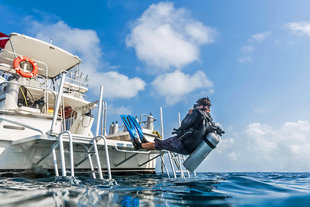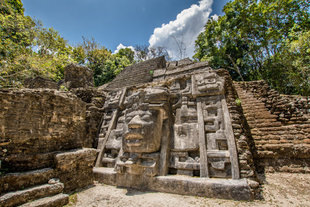Belize is a country whose size defies its diversity, both naturally and culturally. It's natural highlights include the World's third largest barrier reef, tropical forest rich in wildlife, highland pine forest and coastal mangroves. Culturally it combines Caribbean Creole with Spanish speaking descendants of the Mayan people, whose pyramids remain dotted around the country.
Belize's marine life is difficult to match anywhere in the Caribbean for its scale, diversity, colourful and unique atolls. The best coral reefs for snorkelling and diving are to be found on the outer reefs of Belize, with Turneffe Reef and Lighthouse Reef particular highlights. We can take you to these dive lodge based on one of the outer cays; or by scuba dive liveaboard, skippered yacht charter or self-sail 'bareboat'.
The Blue Hole is perhaps the best known of the country's reef sites, forming a deep and almost perfectly circular drop within Lighthouse Reef. In the last Ice Age, the Blue Hole was a dry cave system which flooded as sea levels rose. Features include fresh water stalactites, deep water corals, sponges, and reef sharks which are often seen around the edges.
Inland, Belize protects an admirable 40% of its surface area with national parks and reserves. In the north of the country we visit a conservation area which forms part of the cross-border Mayan Rainforest - the largest area of tropical forest north of the Amazon Basin. This is a great wildlife viewing area, with Central America's densest population of Jaguars and habitat viewing opportunities in its forests, savannahs and wetlands. This is particularly special when amongst Mayan ruins.
Further south, the spectacular Maya Mountains provide a scenic highpoint with cool pine forested ridges, forest swathed valleys and plateaus enclosing spectacular waterfalls, cave systems and isolated Mayan Cities. The little visited Caracol, lying in the isolated Vaca Plateau, is Belize's largest Mayan Site. For hundreds of years Caracol was one of the most powerful states in the Mayan World. Howler Monkeys are the noisiest modern day residents of Caracol, but this ruined city covering 70 square mile was once home to 150,000 people. This is more than a third of Belize's current population.
Throughout ancient history, Caracol jostled for power with the now better known kingdom of Tikal. This lies relatively close to Caracol, across the border in Guatemala, so if you have time, we can take you to visit both temple areas.
With its coral reefs, terrestrial wildlife and state of preservation unmatched in Central America, Belize is a Caribbean gem with a fascinating Mayan history and culture.

